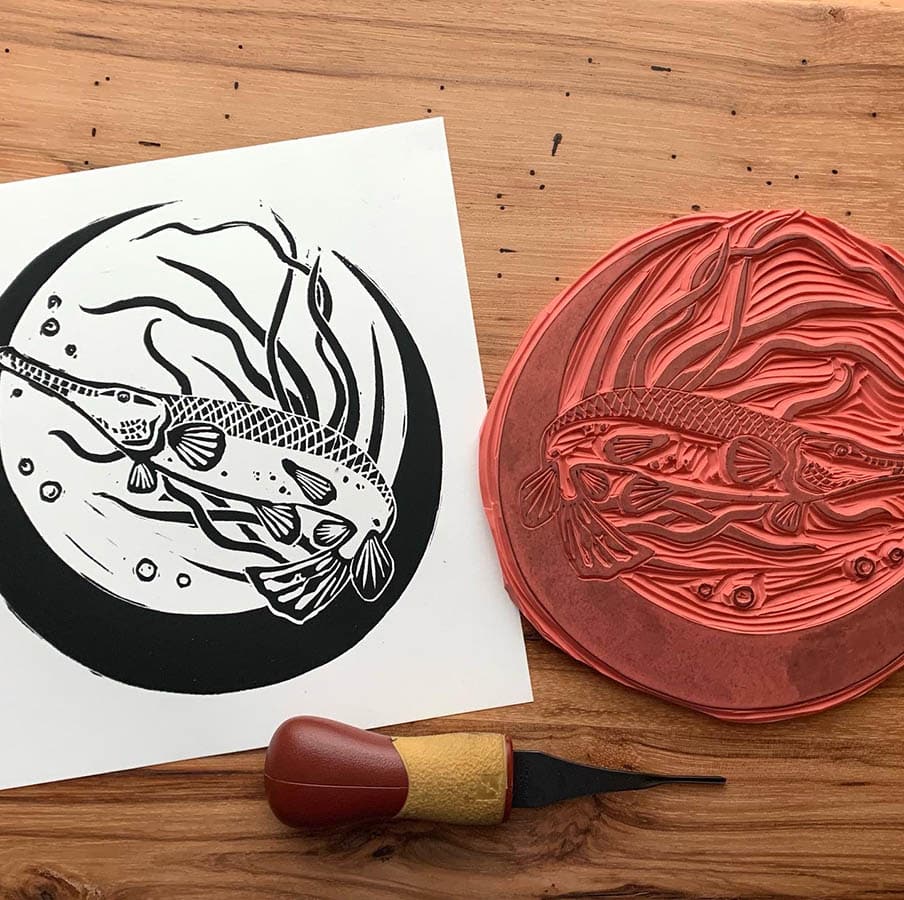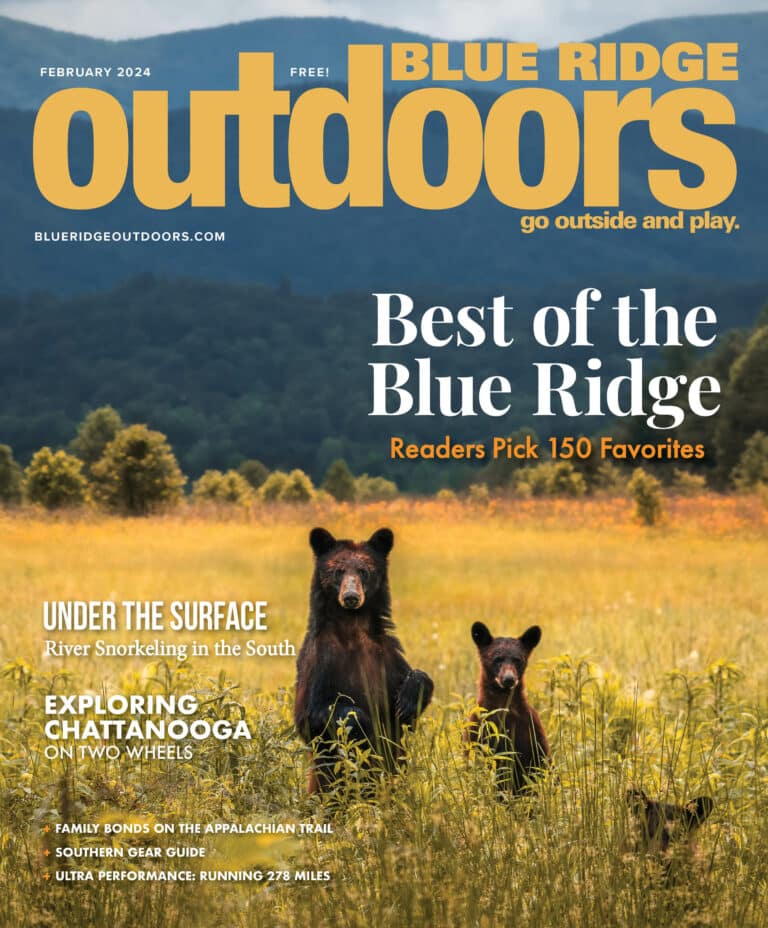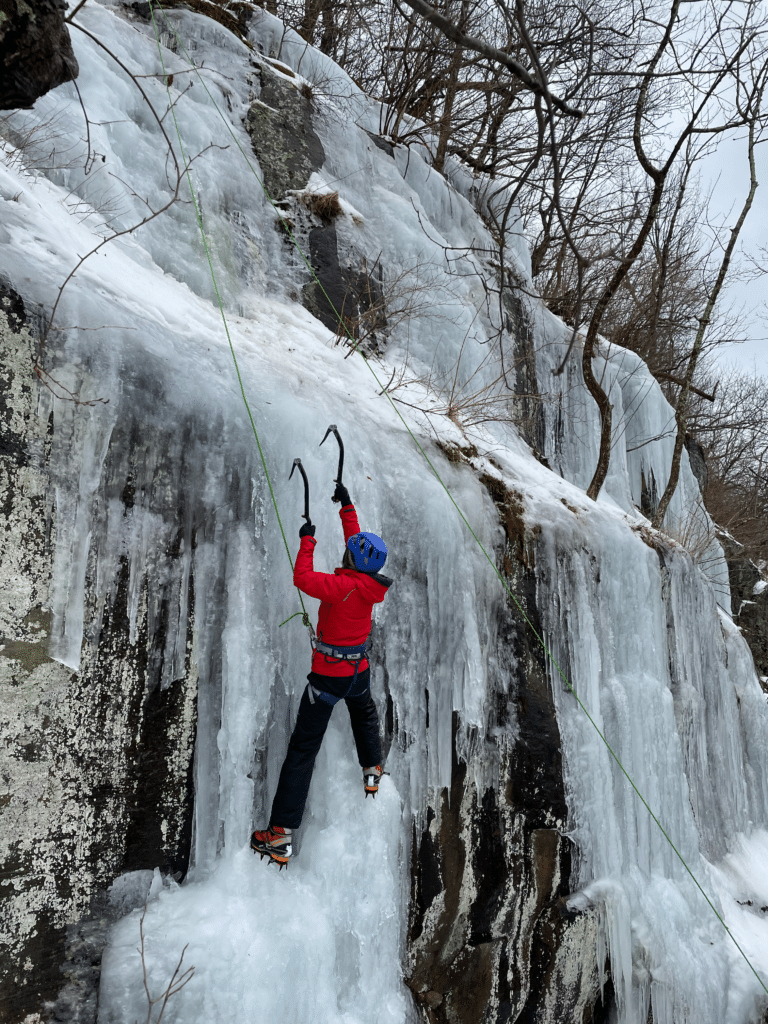WITH EVERY PASS OF HER TOOL, Ivanna Knox carefully carves out the shape of a longnose gar swimming through the shallow weeds. Although it’s a two-dimensional block print, the work renders the living dinosaur’s movement, due to Knox’s careful attention to detail and line work.
Found in the fresh-brackish waters of the eastern U.S., the longnose gar relies on submerged aquatic vegetation for spawning, but its habitat is being threatened by development and pollution. With her block print series depicting the native and threatened species of the Southeast, Knox provides education with her art.
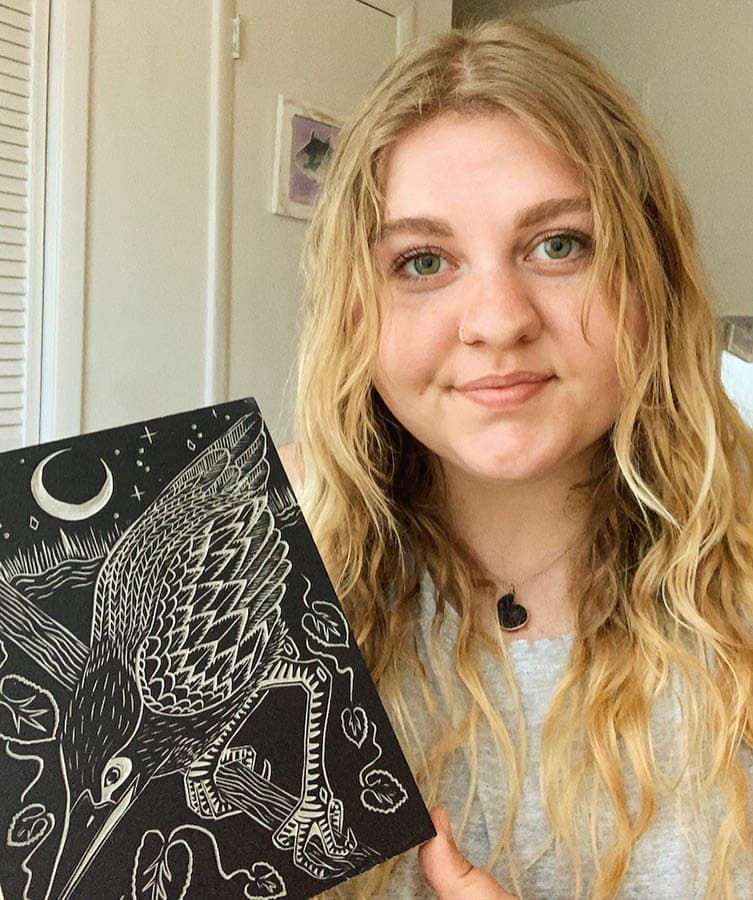
A biologist by trade working for the National Park Service in Ocracoke, N.C., Knox brings her love of the natural world and knowledge of the region’s native species into each print. “I’m aware that the things I’ve been able to see and experience are exclusionary by nature, so providing that glimpse into an often hidden world is amazing and I’m beyond grateful for it,” she said.
Knox launched Pufferfish Print Shop in 2019 after selling her first print for five dollars. “I couldn’t believe someone wanted to pay for my art,” she said. After that first sale, she was hooked. As the holidays approached, Knox decided to create a card set featuring endangered species, including a spotted skunk wearing an ugly Christmas sweater, a red-cockaded woodpecker atop a Christmas tree, and a diamondback terrapin with a gift resting on its shell.
Her small apartment quickly turned into a printing factory as she sold over 300 cards just a few days after posting them online. “I would get off work and print like a madwomen, hand stamping each card and filling my bedroom floor with dozens of cards to dry,” Knox said.
Since that first card set, Knox has worked hard to keep her work affordable for everyone. “Local, handmade art can often feel exclusive because of high price points,” she said. “I wholeheartedly believe that art is for everyone.” Block printing—the process of carving out a stamp that can be reused—allows Knox to keep her costs down.
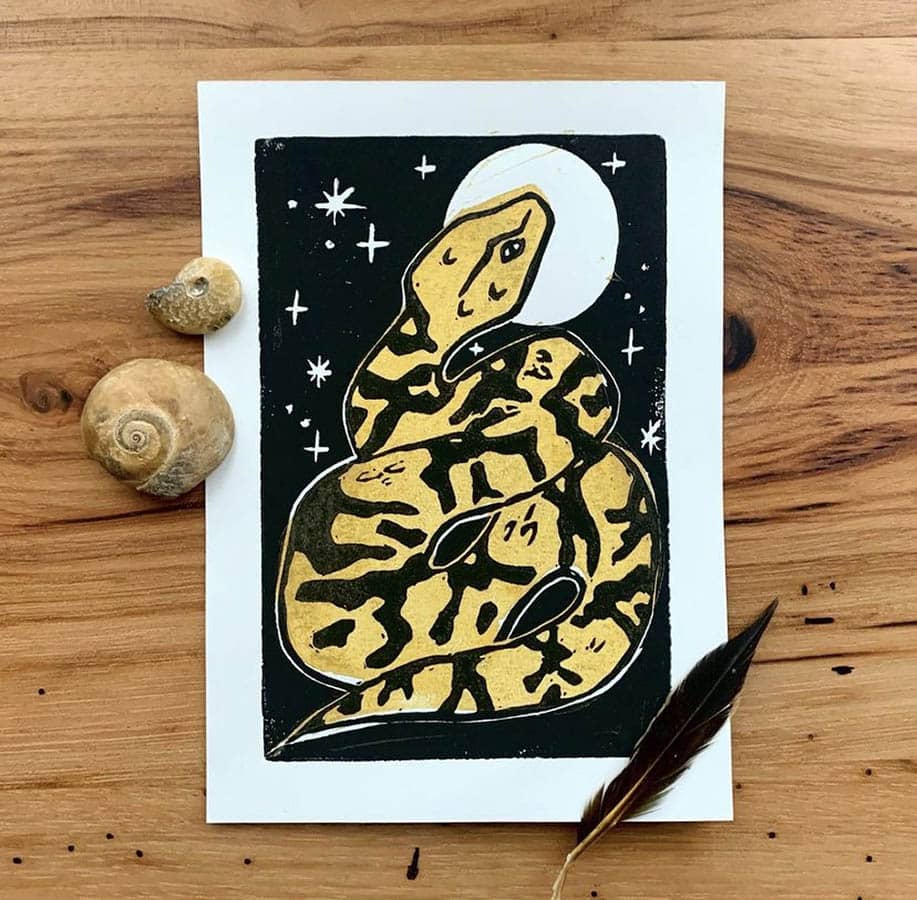
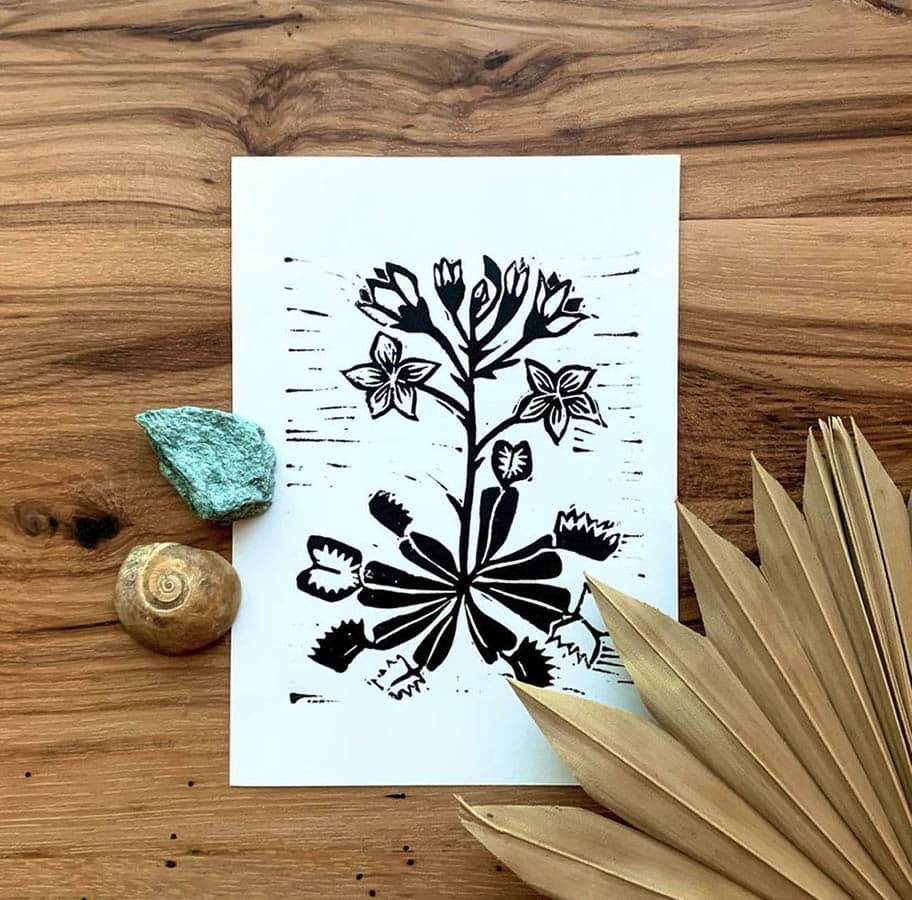
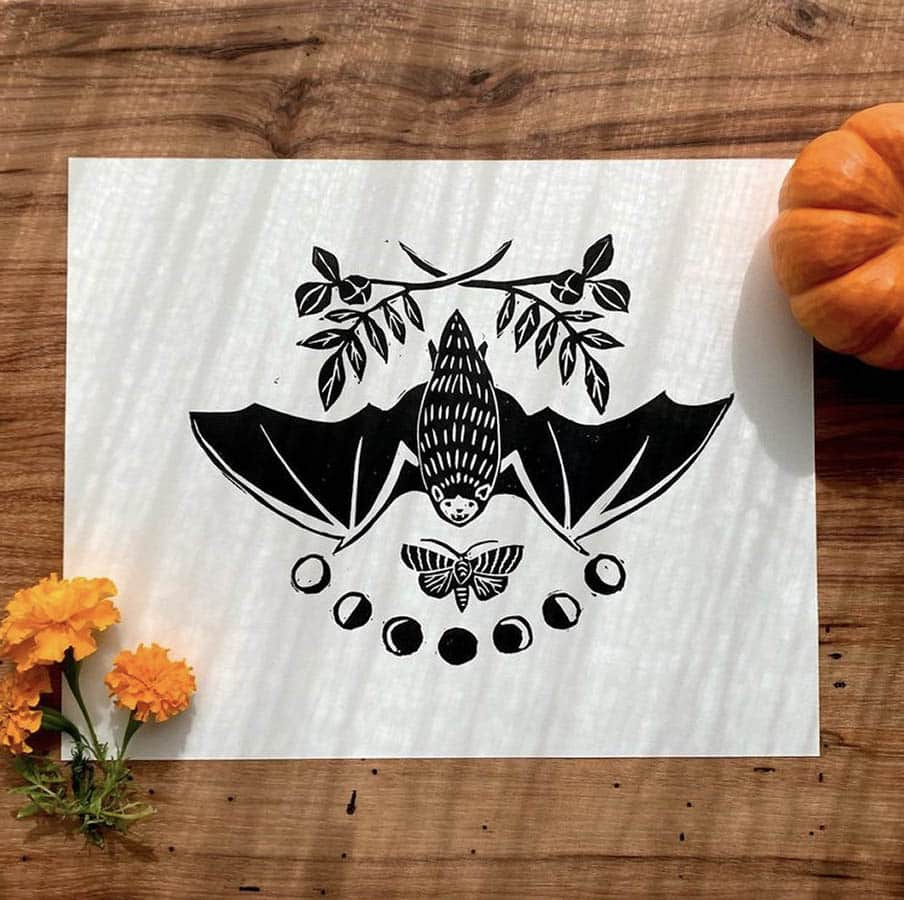
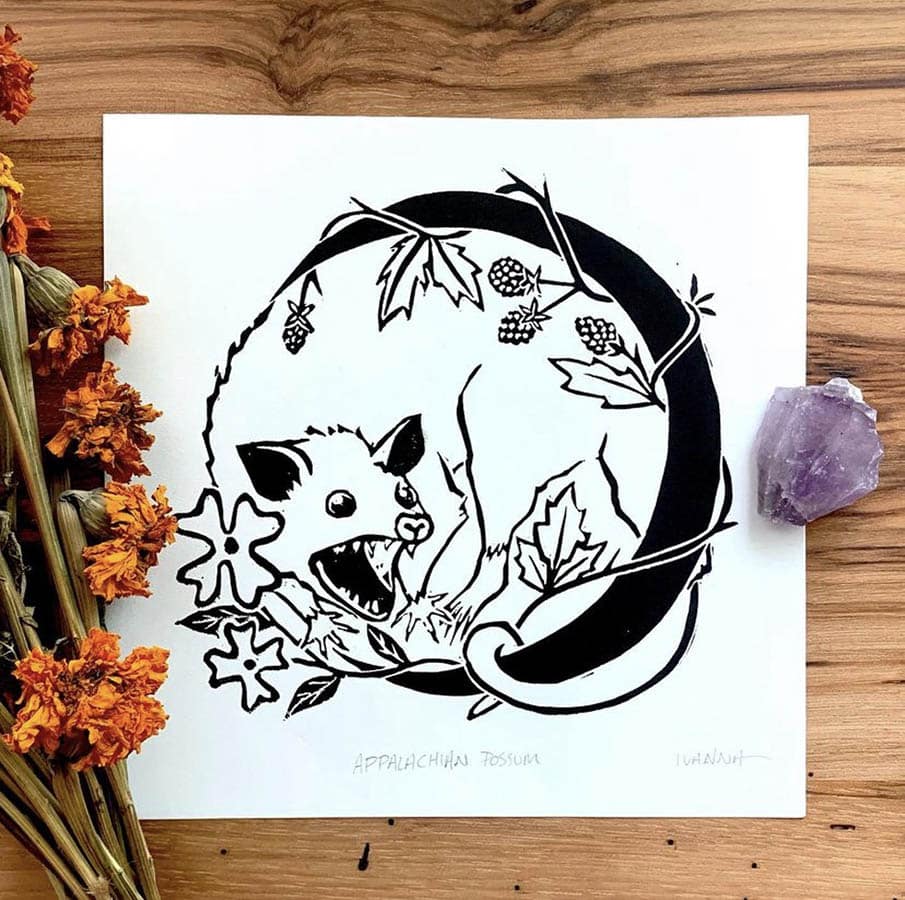
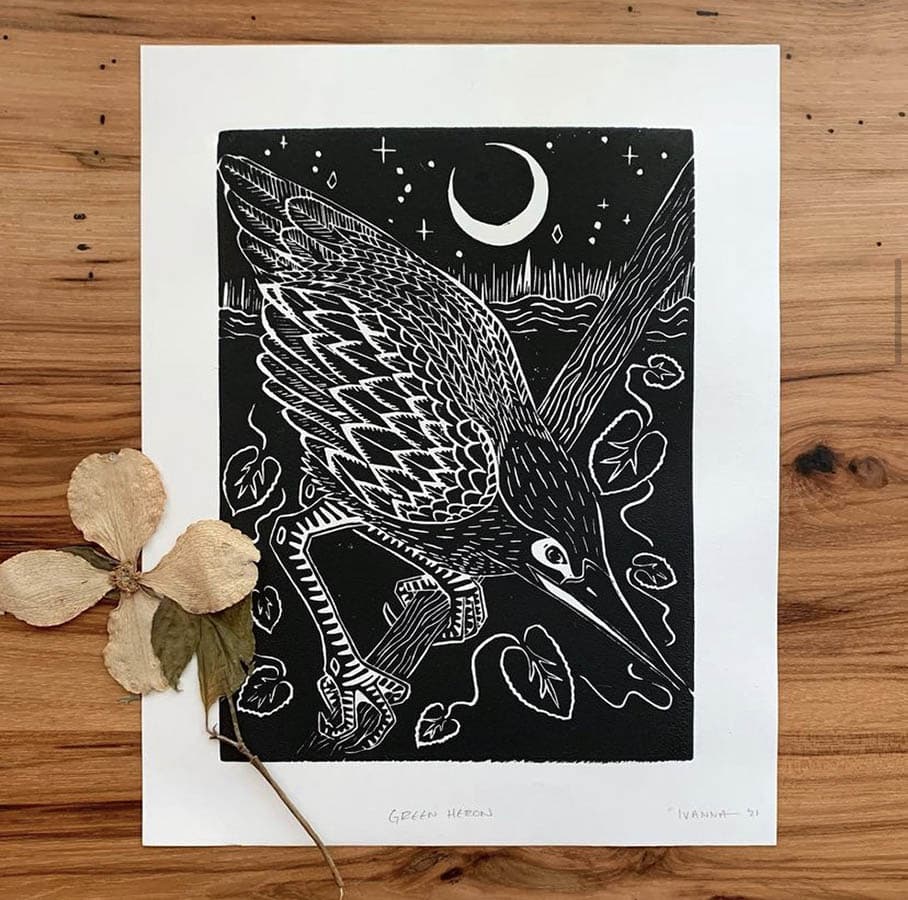
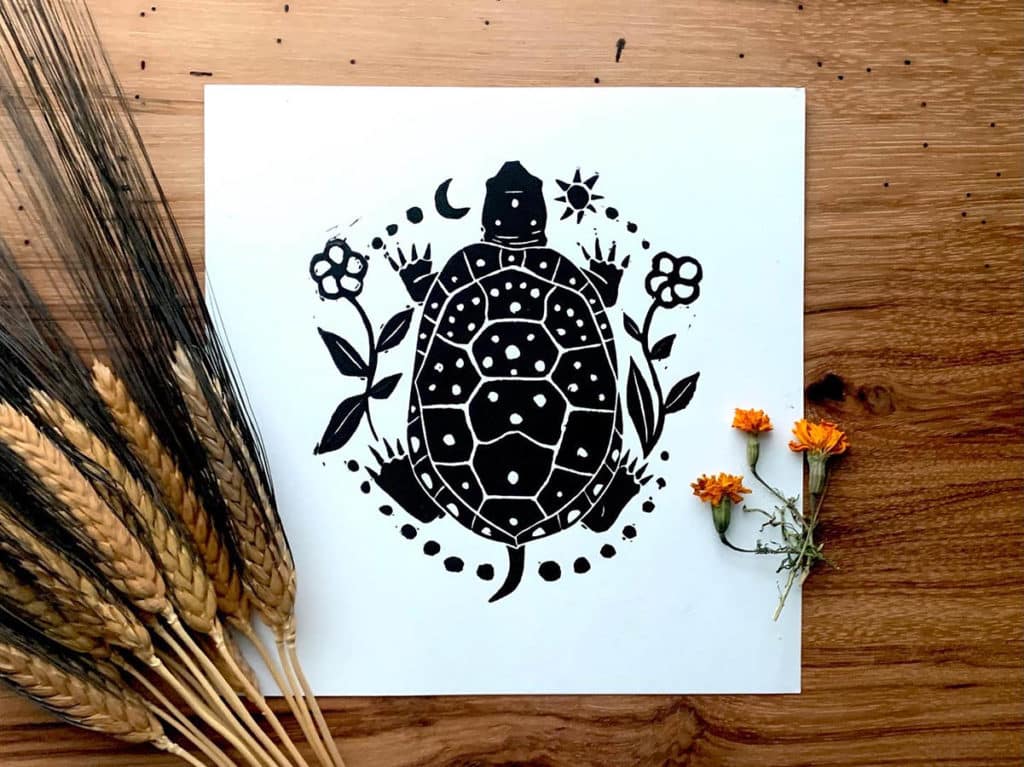
The Technique
Knox was drawn to block printing because of its history that dates back to the first century, and the physicality of the art form. It’s a practice that uses a variety of muscles to draw, carve, press, and print each piece.
As a biologist, Knox takes time to research each animal before she even puts a pencil to paper. Once she’s read about their habitat, threats, food sources, and predators, she begins to sketch. “I really enjoy having an ecosystem approach to my pieces,” she said. “So while the focus may be an eastern red bat, it allows me a great opportunity to include cabbage moths and pecan trees to create a full story about the animal.” Context is the key to creating a deeper understanding of the species’ overall role in an environment.
From her drawing, Knox transfers the design over to her surface using carbon paper and begins carving. Working in relief is a delicate art form in which mistakes can’t be covered up or painted over. Because she’s removing material, Knox has to be extremely precise with every pass of her tool. “Once it’s carved away, there’s no going back,” she said.
Knox chooses her surface for creating the stamp depending on what she will be printing. Linoleum provides a harder surface, allowing greater attention to small details, whereas rubber is softer and better for printing on textiles like shirts and bandanas.
Then it’s time to ink the carving and begin the printing process. “I always joke the first roll is truly an adrenaline rush for me,” Knox said. Before she sends out each print to its new home, Knox includes information on the back board so people can learn about conservation threats and fun facts she learned while researching the species.
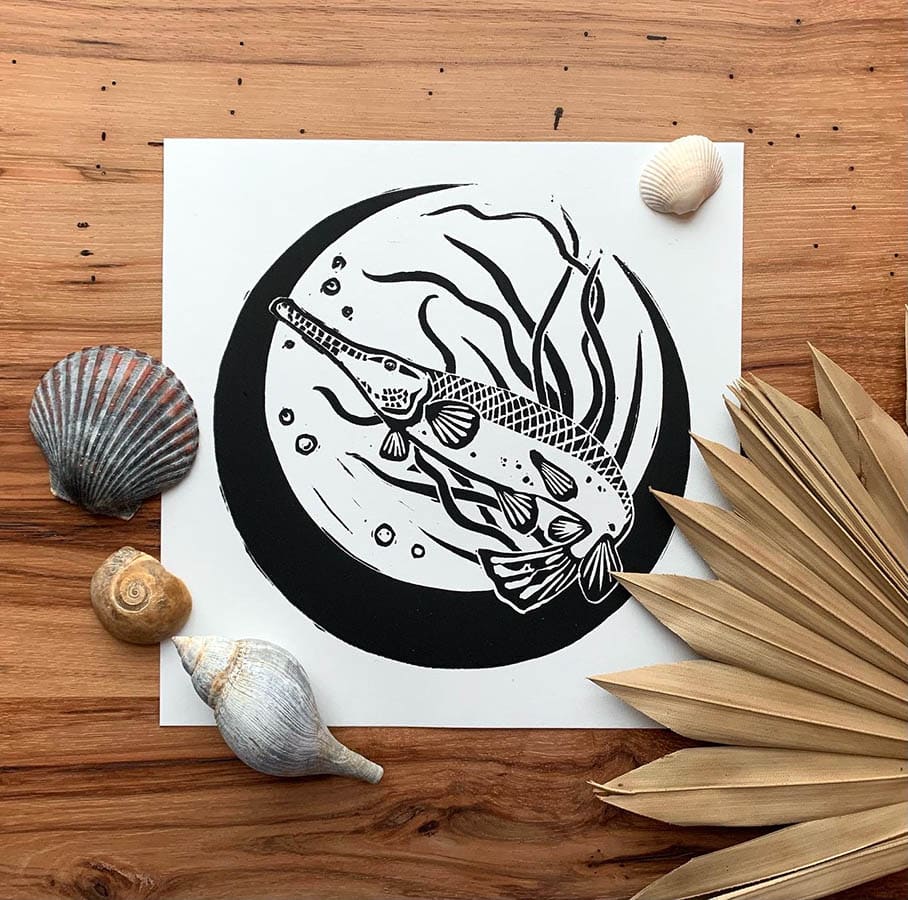
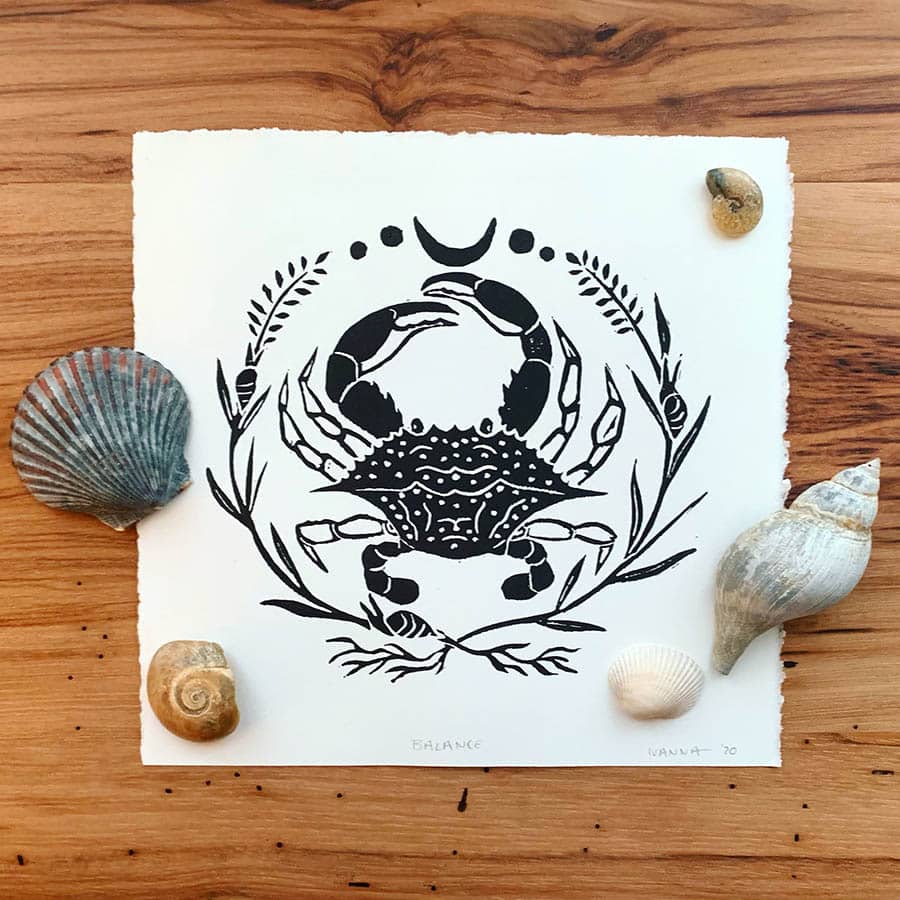
Connection to Place
Knox’s art comes from a deep connection to place, as formative experiences from childhood helped shape her love of nature. Whether it was fishing John’s River off Lake Rhodhiss with her dad and grandpa, backpacking Little Lost Cove Cliffs, or watching meteor showers from a dock on the Currituck Sound during the summer, there are quiet moments and a list of firsts that Knox infuses into her art.
Growing up in western North Carolina, before moving to the state’s coast, introduced her to a variety of landscapes, so she’s harnessed inspiration from the mountains of Appalachia and the dunes of the Outer Banks. “To have such wildly diverse habitats—temperate rainforest mountains, warm sand hills, and coastal plains—all within a day’s drive, I don’t think I’ll ever run out of inspiration,” she said.
Several of the species Knox has carved are ones she has been able to observe in person, giving her a lived experience to reference the movement and environment that is harder to pick up through source materials. She’s even gotten some of her favorites added to her tattoo sleeve. With her focus on native species of the Southeast, Knox has carved out a niche.
Through her observations, Knox has discovered a world of beauty in the everyday and channeled the wonders of nature into a wellspring of creativity. “To look at the delicate intricacies of a flower, the color gradient of a sunset, or the topographic-like lines on a turtle shell, it’s evident that art surrounds us,” she said.
You can find more of Knox’s work on Instagram @pufferfishprintshop.
Cover photo: A carving and print of the longnose gar. Photo by Knox
